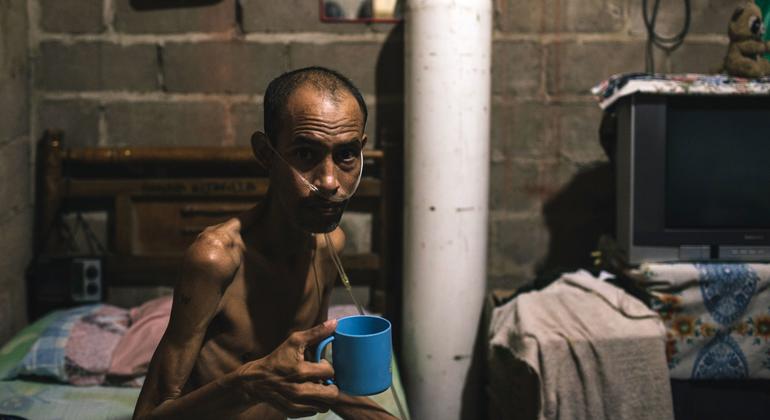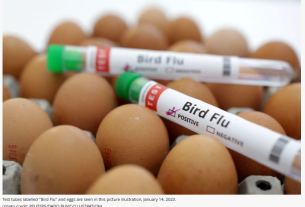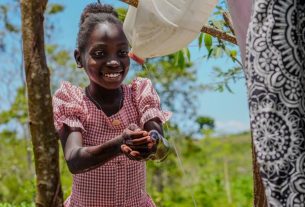|
Getting your Trinity Audio player ready...
|
The document lays out ambitious new targets for the next five years that include reaching 90 per cent of people with TB prevention and care services, providing social benefit packages to those who have the disease, and licensing at least one new vaccine.
TB is the second leading infectious killer worldwide after COVID-19, with some 1.6 million deaths in 2021 alone, according to the World Health Organization (WHO). The only available vaccine is more than a century old.
Defeating a killer
“Why, after all the progress we have made – from sending man to the moon, to bringing the world to our fingertips – have we been unable to defeat a preventable and curable disease that kills over 4,400 people a day?” said the President of the UN General Assembly, Dennis Francis.
TB has afflicted humanity for millennia, going by several names including the white plague and consumption.
It is caused by bacteria and mainly affects the lungs, and treatment is with antibiotics. A WHO council established to facilitate the development and equitable use of new vaccines met for the first time this week.
A personal commitment
Stamping out the TB epidemic is among the health targets of the Sustainable Development Goals (SDGs), the roadmap for a more just and green global future by the end of the decade.
Five years ago, countries set the target of delivering TB treatment to 40 million people, reaching 34 million. They also aimed to provide 30 million with preventive treatment but fell short by half.
UN Deputy Secretary-General Amina Mohammed called for action to tackle the main drivers of TB – poverty, undernutrition, lack of access to healthcare, the prevalence of HIV infections, diabetes, mental health, and smoking.
Stigma surrounding the disease also needs to be reduced so that people can get help without fear of discrimination, she added, while governments must ensure universal health coverage that includes TB screening, prevention and treatment.
Ms. Mohammed also shared her own reason for supporting the global fight.
“My commitment is my personal story: losing my father to TB at 50, 37 years ago this week,” she said. “Today we have the tools to diagnose, treat, and what we need right now is a vaccine. Let’s end TB now. It is possible.”
Stigma fuels death
Mongolian author Handaa Rea, who has survived the disease, urged world leaders to “treat TB not only medically but also socially.”
She has written about her own experience of TB-related stigma, discrimination that she said is prevalent in many developing countries, resulting in “hundreds of thousands of people” delaying seeking treatment.
The consequences of stigma are “more enhanced” for women and girls who are held to higher standards of health, well-being and beauty, she added.
“When society says things like ‘she’s too skinny, because she has TB, she’s unworthy of marriage because she has or had TB, or she continues to have TB because she’s irresponsible,’ we as a society are bullying TB patients one step closer to death – a death that is fully preventable. And this has to stop,” she said.
The ‘final chapter’
WHO chief Tedros Adhanom Ghebreyesus commended the “amazing” energy in the room, where participants frequently chanted “End TB, yes we can!”
He welcomed the political declaration, which was agreed by consensus ahead of the meeting. It will be presented to the General Assembly, the UN’s most representative organ, comprising all 193 Member States.
“For millennia, our ancestors have suffered and died with tuberculosis, without knowing what it was, what caused it, or how to stop it,” he said.
“Today, we have knowledge and tools they could only have dreamed of. We have political commitment. And we have an opportunity that no generation in the history of humanity has had: the opportunity to write the final chapter in the story of TB.”



